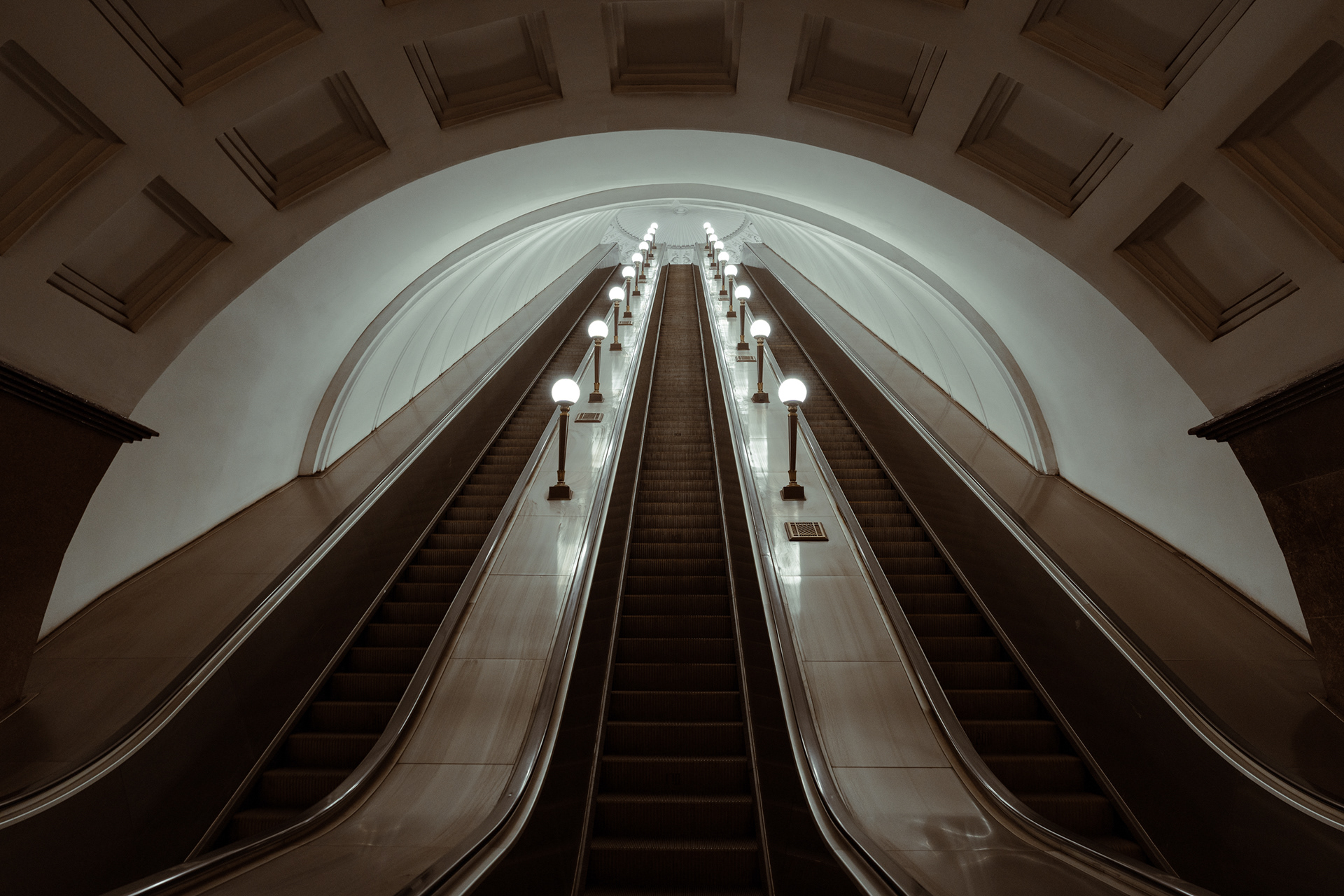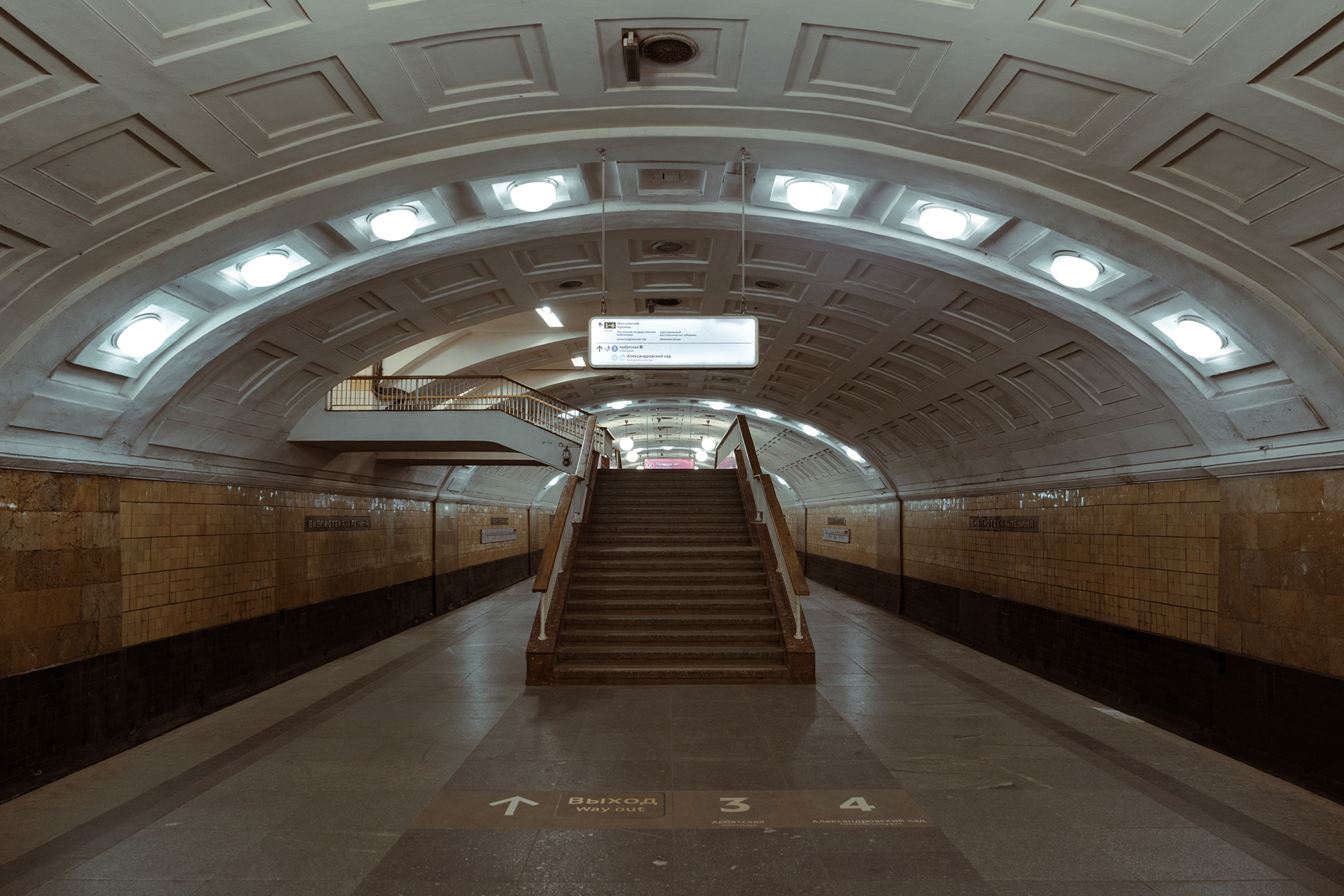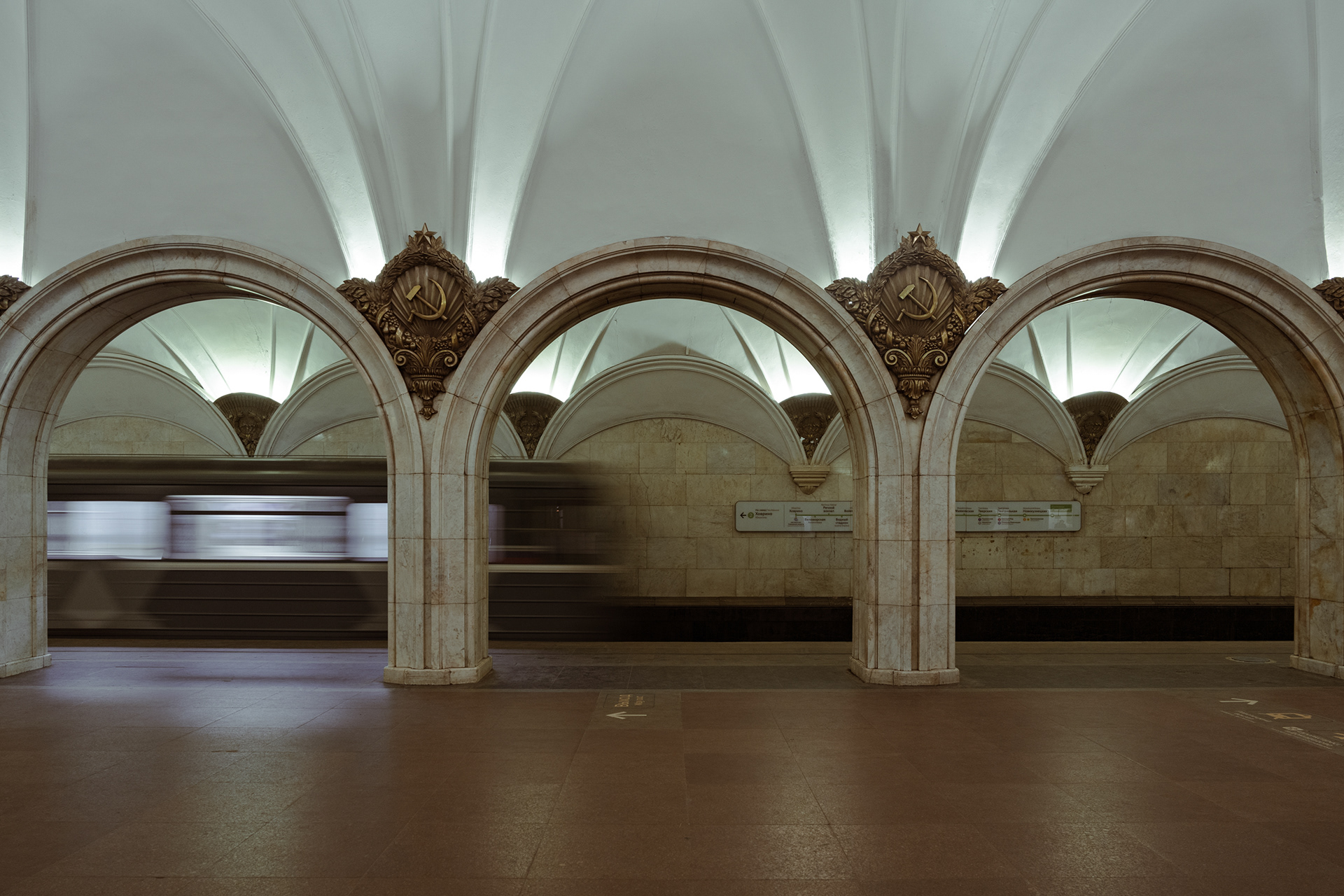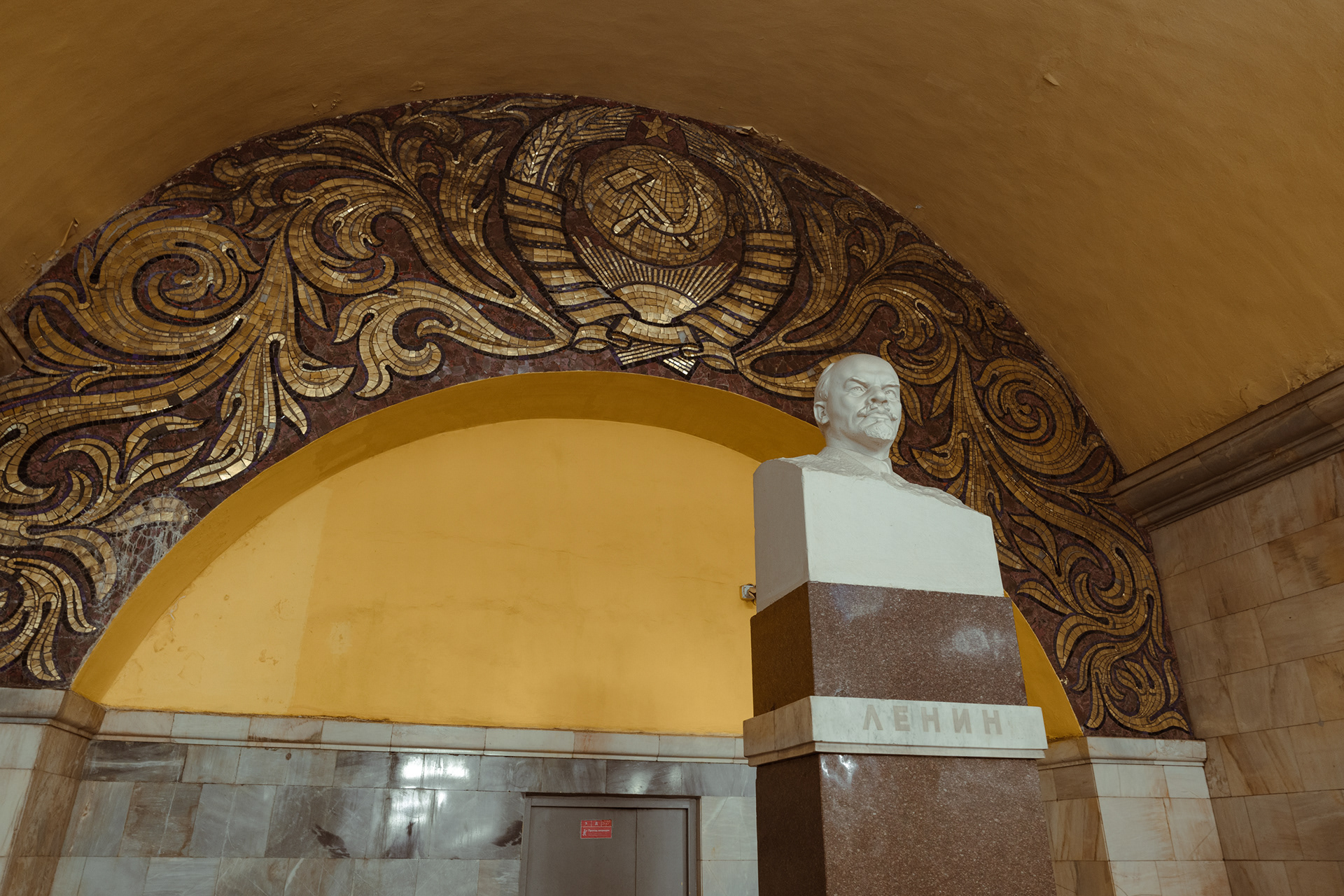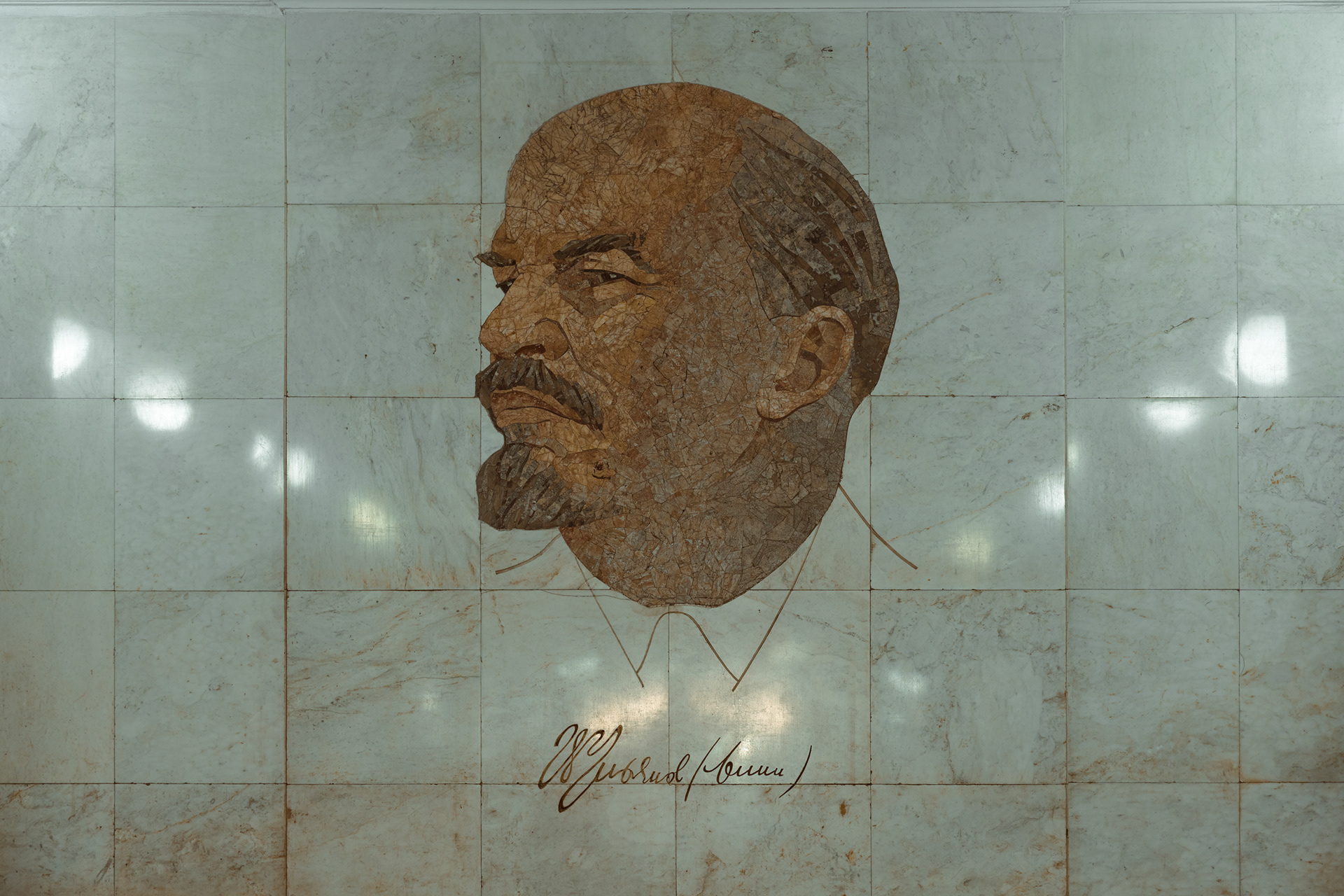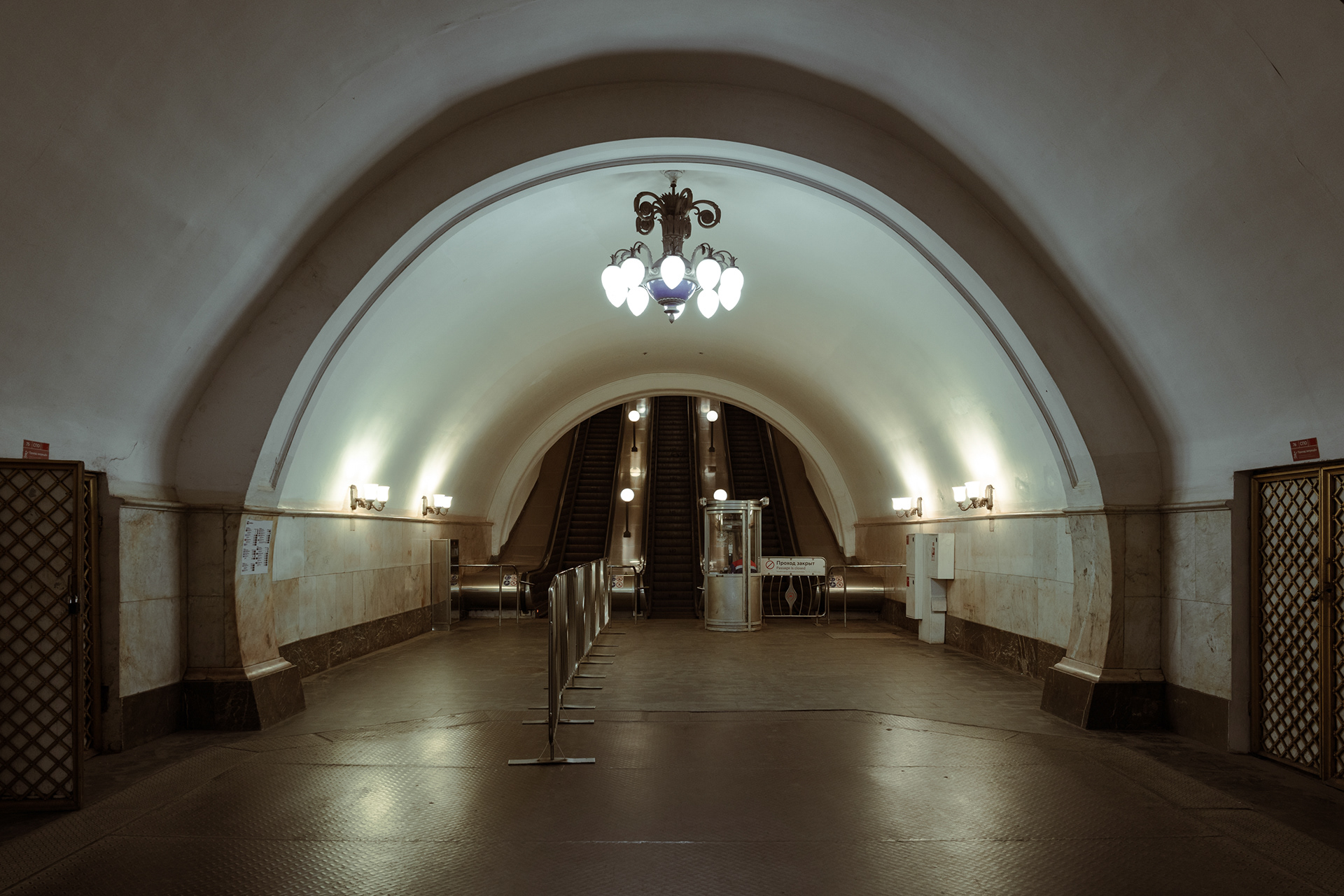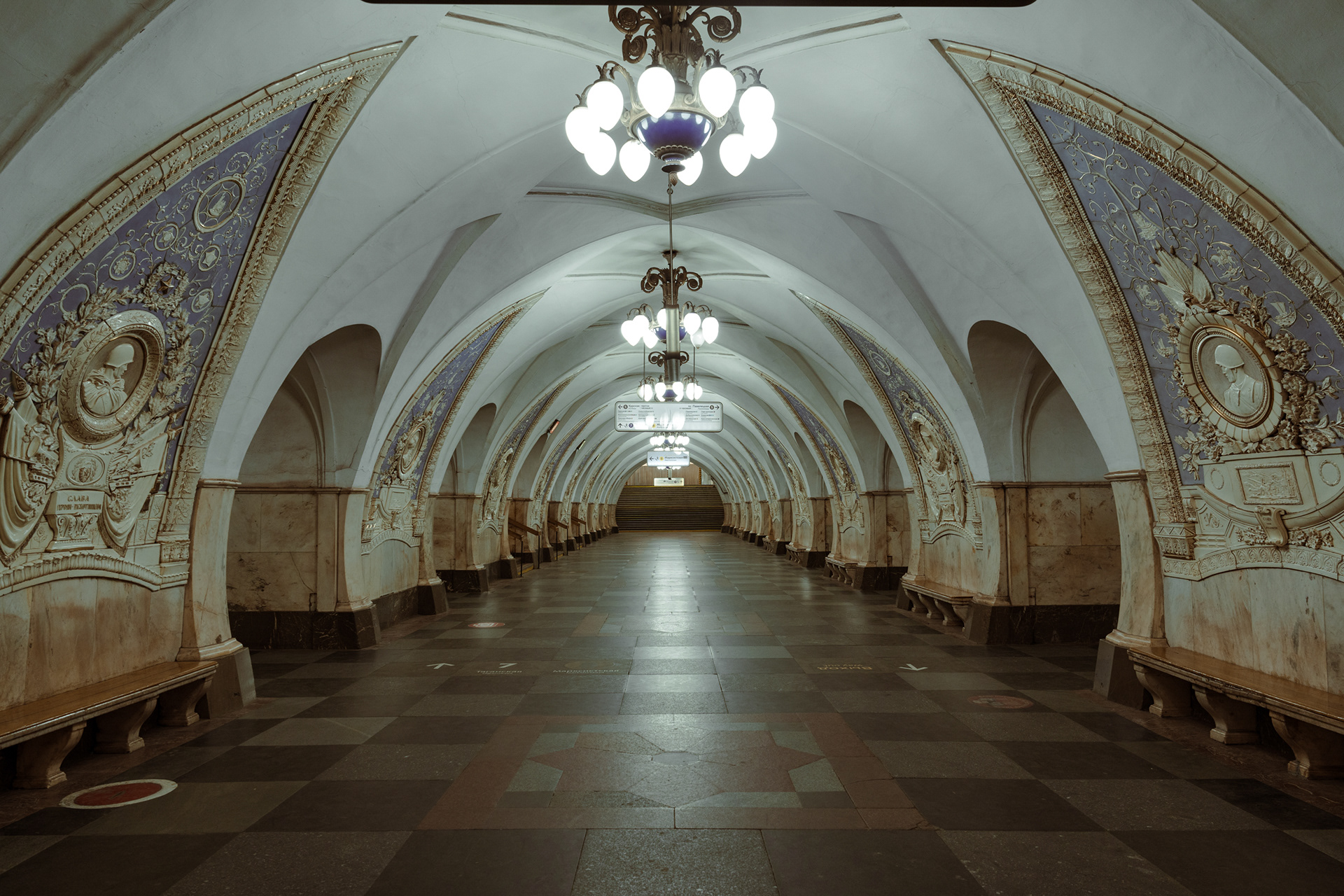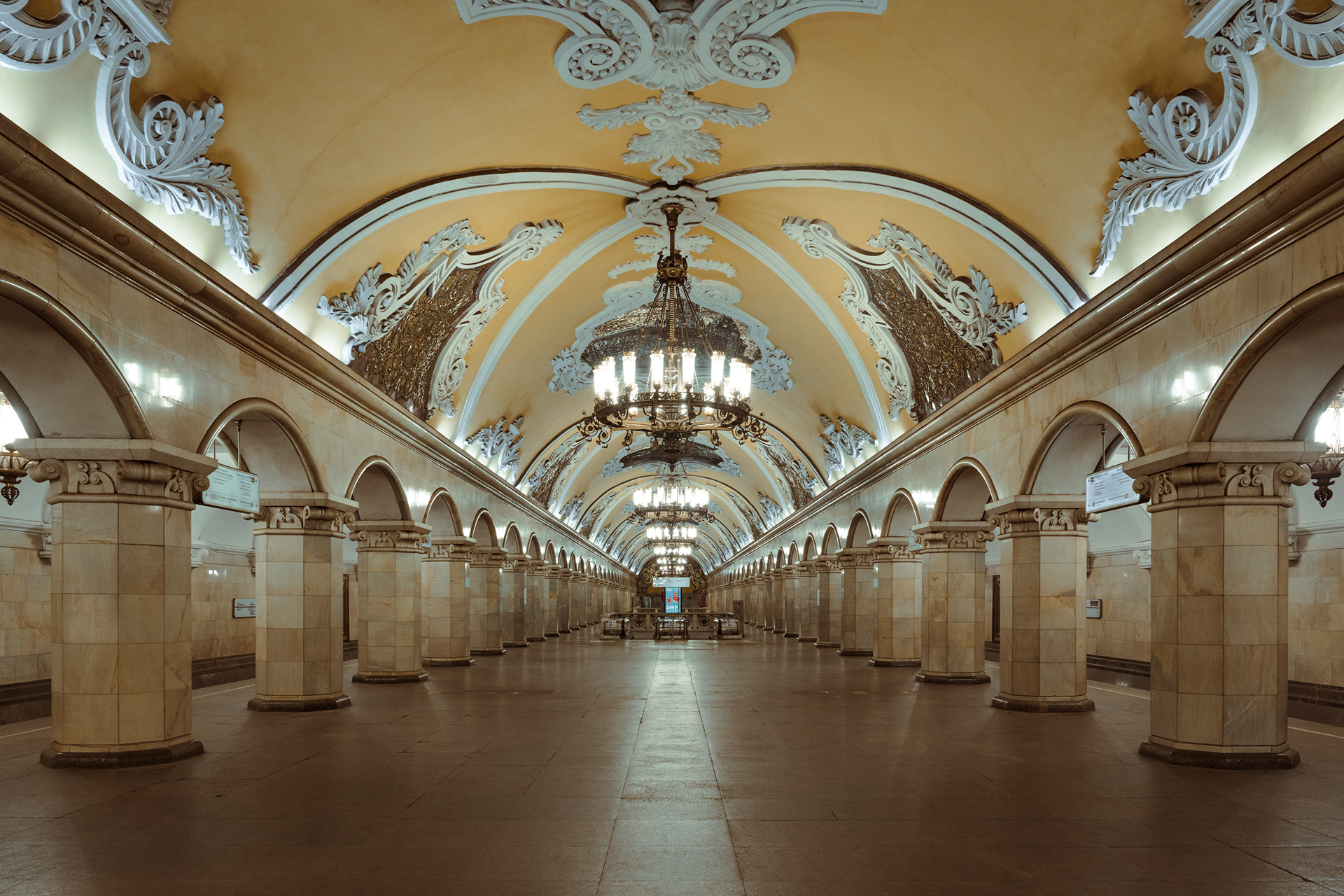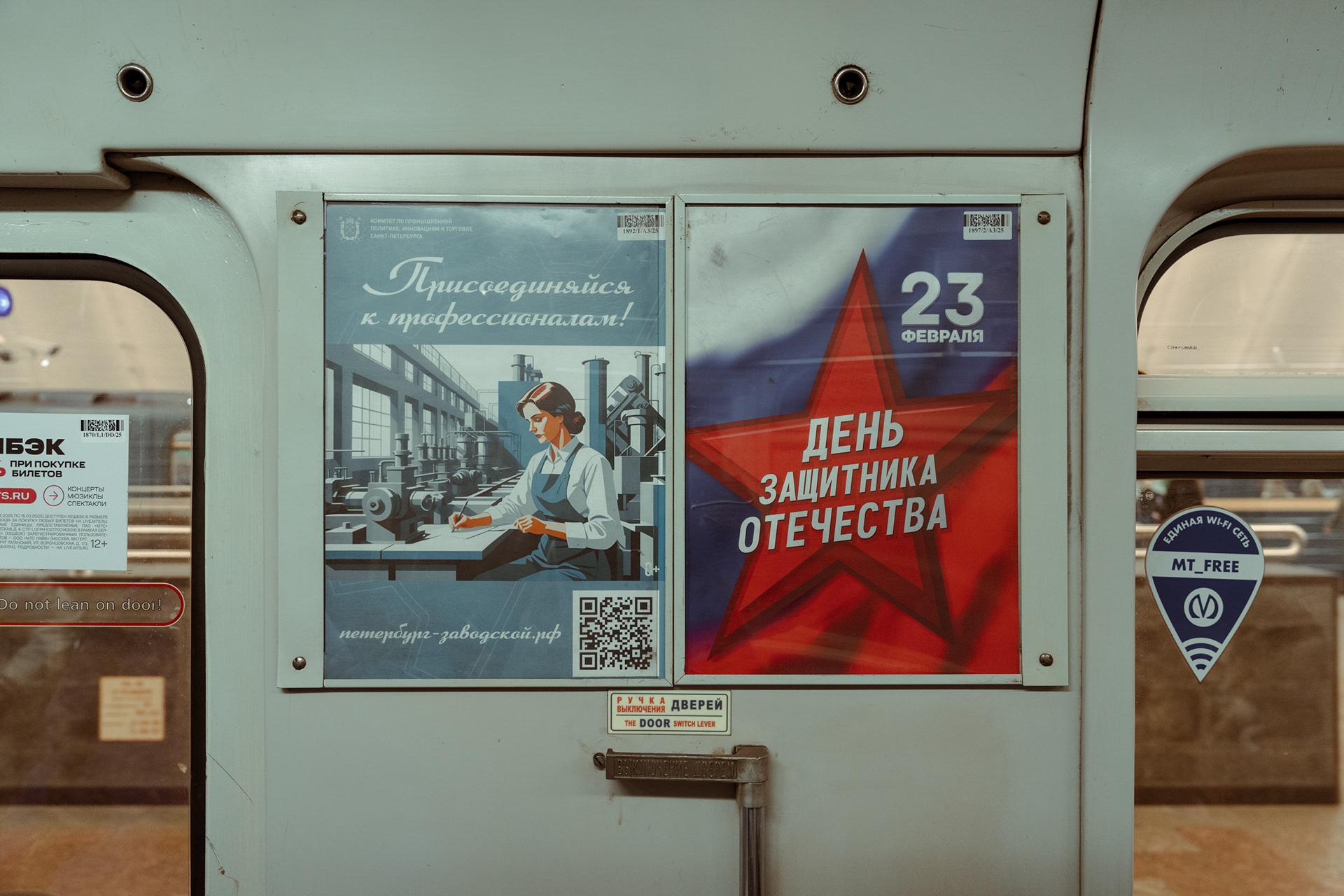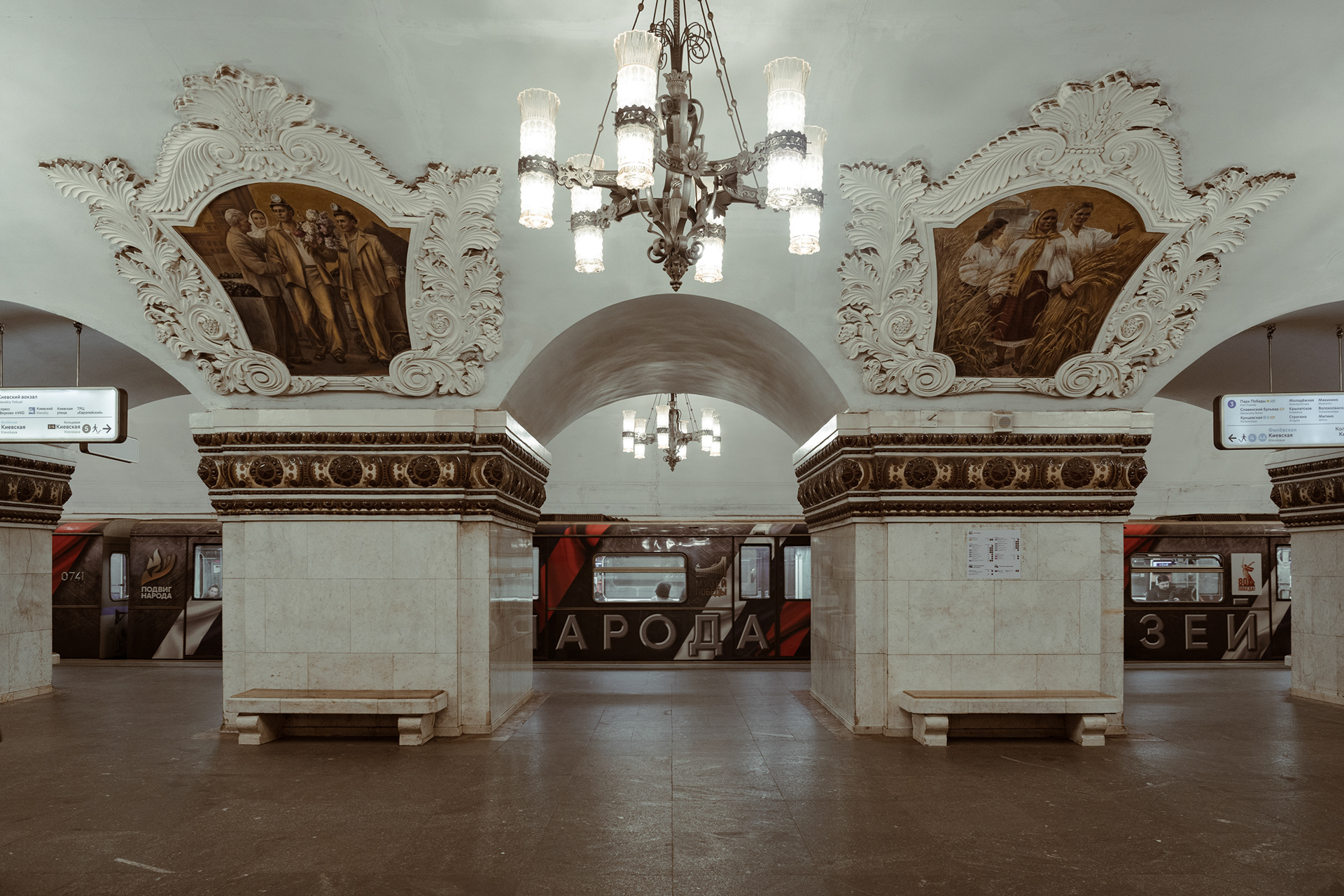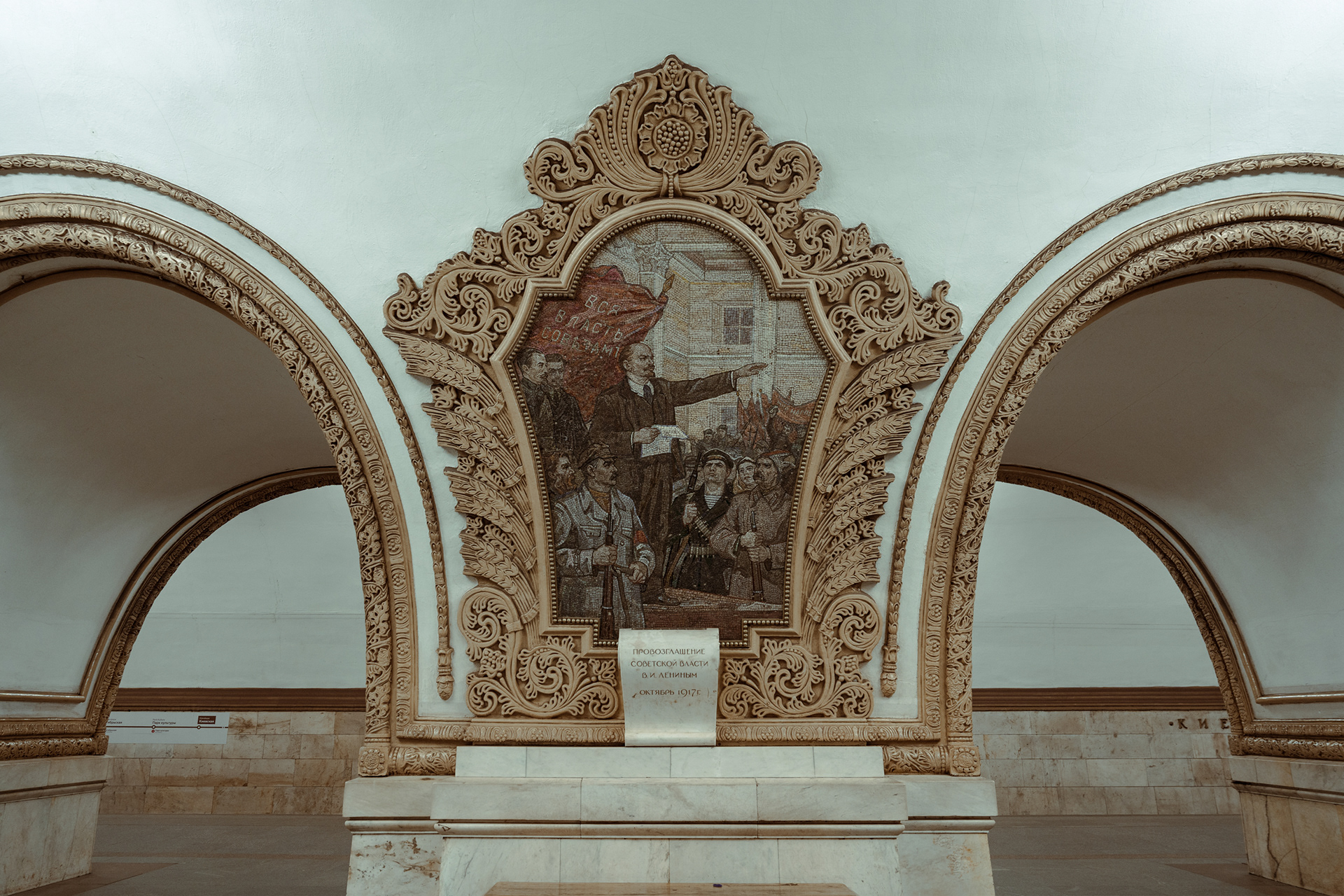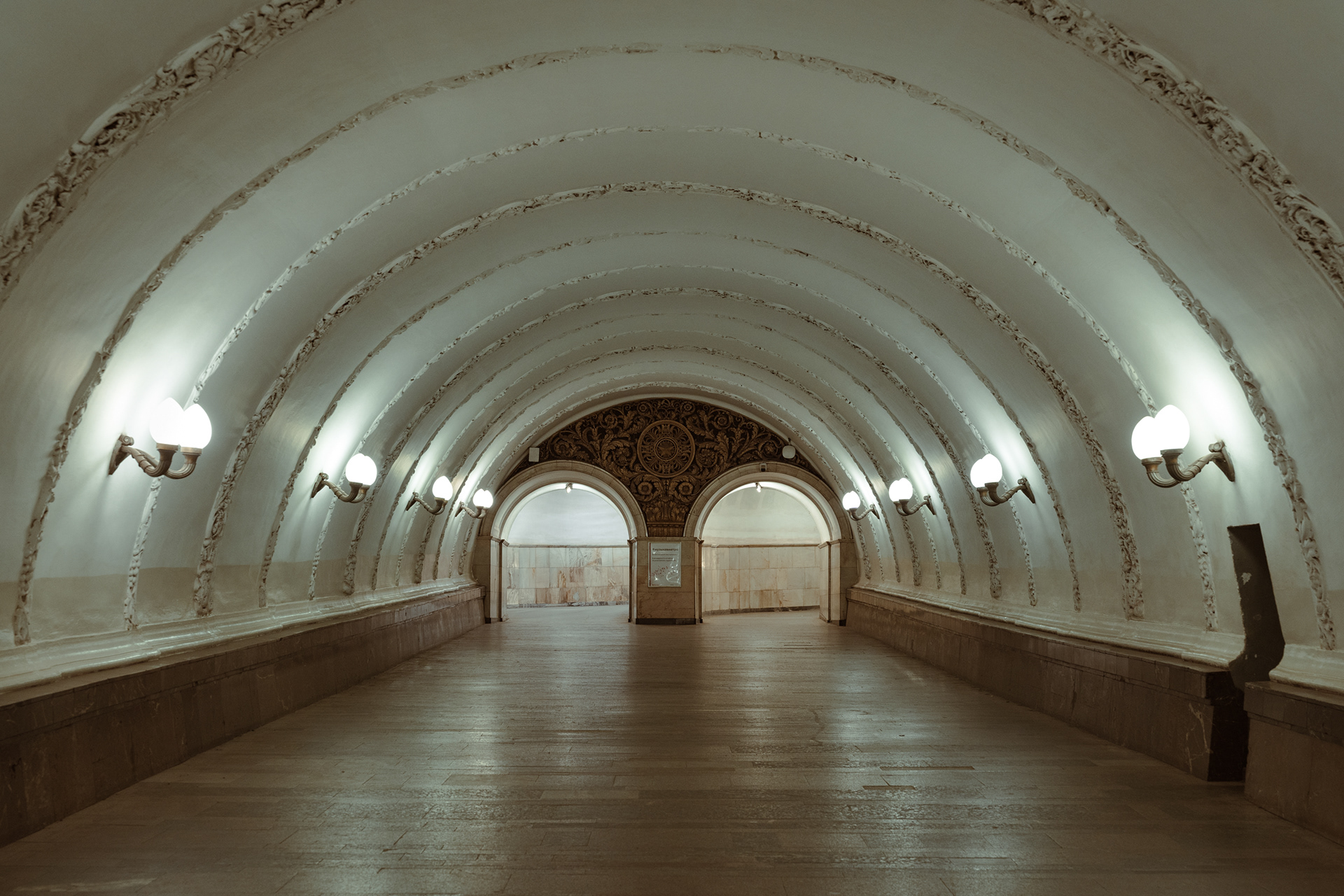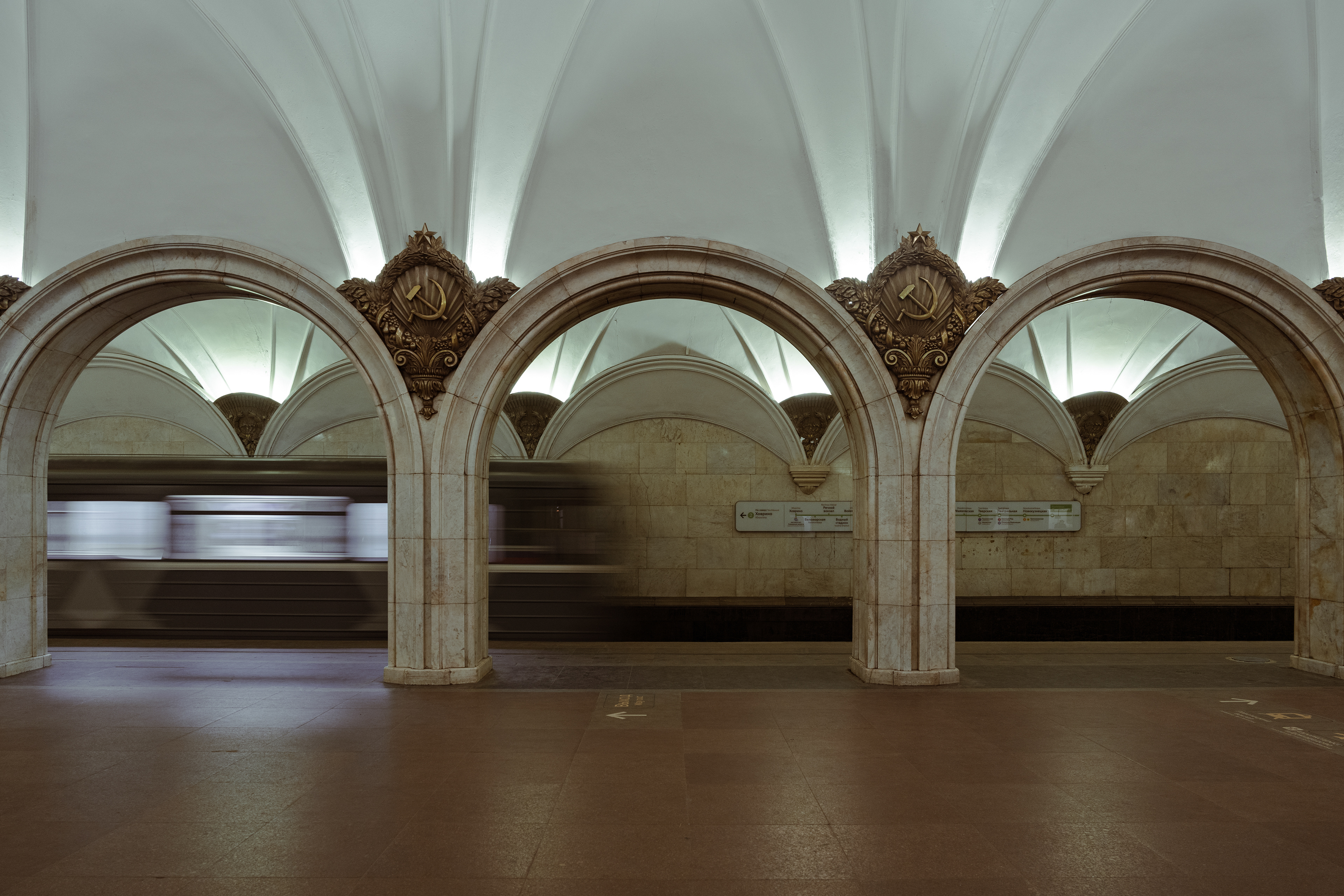
The inability to let go of the good old past, coupled with outdated ideologies: In Latvia, Lithuania, Poland, Germany, and the Czech Republic, where the concept of transitional justice has been widely implemented, the traces of past totalitarian rule have been erased. However, Russia has chosen to preserve many Soviet symbols everywhere instead of removing them.
According to anthropologist Marc Augé in his book Un ethnologue dans le métro, as a commuting space that people use repeatedly, metro stations shape people’s urban identity. We breathe the air of the metro, navigate its labyrinth, recite the station names, and walk through the intertwined history of national and local development.
To explore Soviet symbols, I went to the metro stations of Saint Petersburg and Moscow. In these beautiful stations, or underground palaces, I saw many gorgeous paintings, mosaics, and statues of Lenin and other USSR figures. Each station has its own mystery and charm, yet in the contemporary era, where the USSR has long since dissolved and society has become more open, it also seems rather absurd.
Through my photos and the historical archives, I try to examine how the interior designs of these stations reflect national ideologies from the past to the present and how they manifest in people’s daily lives. In my country, Taiwan, we also face the challenge of transitional justice after being under martial law for 38 years during rule of the Kuomintang government. Therefore, Russia’s contrasting attitude toward the past symbols of totalitarian rule, compared to its neighboring countries, is worth reflect upon.
